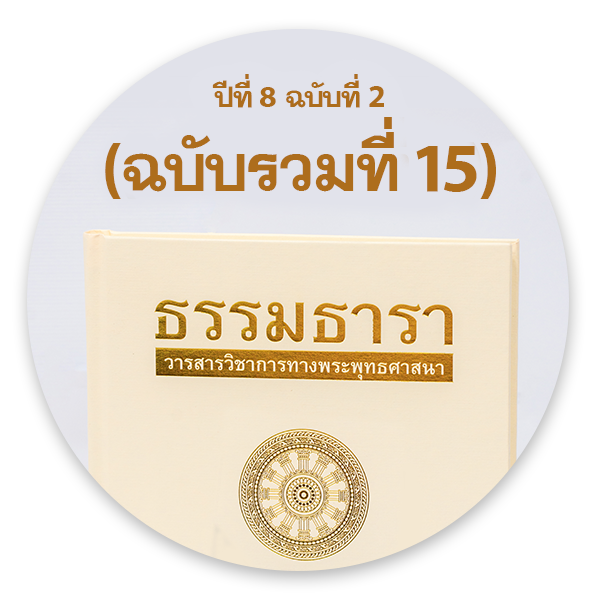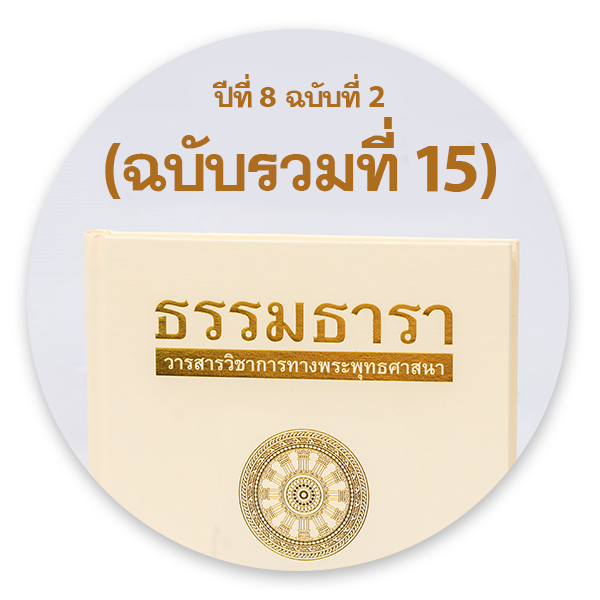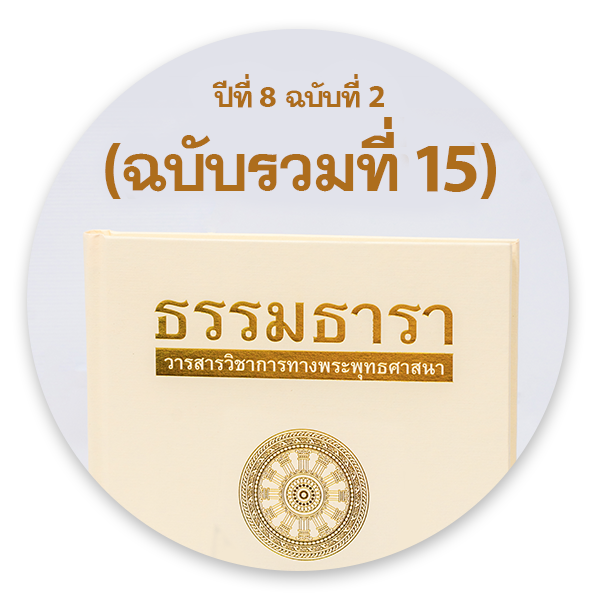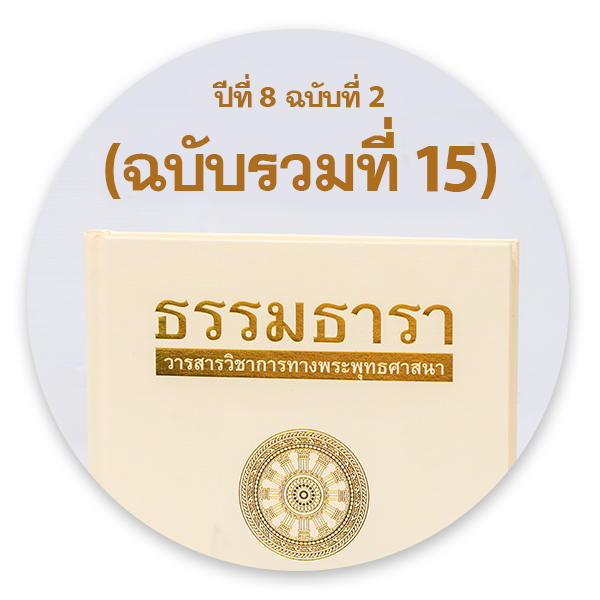In this Dhammadhara Journal, readers will find various articles as follows:
“The Origin and Development of Buddhist Canon” is written by Mr. Sutus Aramrattana and Assoc. Prof. Praves Intongpan. This article enables readers to gain insight into the origin of the Tripitaka and the possibility of the introduction and addition of the scriptures since the First Buddhist Council. The information presented in this article is considerably interesting and enjoyable to follow.
“Cāturaṅga Sannipāta (1): The Buddhist Tradition ‘Magha Puja day’ in Thai Society” is written by Mr. Pongsiri Yodsa and Asst. Prof. Wilaiporn Sucharitthammakul. This article contains an analysis of Magha Puja day traditions, which were initiated by His Majesty King Mongkut and expanded throughout the country in the later period, becoming unique to Thai Buddhists since the tradition does not appear any other country. The references to this information were obtained from the Dīghanakha Sutta of Majjhimanikāya Commentary and the Mahāpadāna Sutta of Dīghanikāya Commentary, in which the main content was consistent, with only a few certain details differing.
“Inscription on Buddhapada from Andhra Pradesh: Evidence of Vibhajjavāda Sect of Buddhism” is written by Dr. U-tain Wongsathit. This article thoroughly studies a sculpted footprint of the Lord Buddha from Andhra Pradesh in India from the aspects of characters, language, construction materials, and discovery location of the inscription contents. Consequently, it was found that the inscription of the Buddha's footprint represents the evidence of Vibhajjavāda Buddhism, which later developed into Theravada. It also shows the relationship with the Cathedral of Sri Lanka and bears connection with the double Buddha’s footprints and the Amaravati art pattern in Si Mahosot district, Prachinburi Province, Thailand.
“Hatsadiling Bird Castle: The Signifiers of Meaning and Resources from Buddhist Texts and Literatures” is written by Dr. Surachai Phutchu. This article presents the history and influence of Hatsadiling Bird Castle, which is described as a large bird as strong as five elephants. Buddhist scriptures mention that these beings sometimes fly people away, but without the intention of harming them. In the later period, the creature’s aspect was developed into a part of the crematorial paintings and sculptures, symbolizing the action of sending deceased ones to higher realms.
“Reinforcement of Kalyāṇamitta Community Strength with Buddhadhamma” is written by Ms. Arunee Sujetnan. This article studies the strategic plan of dharma principles from the Tripitaka being integrated into the Kalyāṇamitta House project of Wat Phra Dhammakaya, contributing to gradual expansion throughout the community since 1999. The study concluded that the project has built a strong and sustainable Kalyāṇamitta community in three aspects, which are cultural, social, and environmental. The key factor to this achievement is a strong leader that is accepted by the community.
I hope that our dear readers will gain knowledge, ideas, and enjoyment like always.
Phragrupalad Suvattanabodhigun (Somchai Thanavuddho)
14 July 2022
Buddhist Lent Day
Published: 2022-07-22






